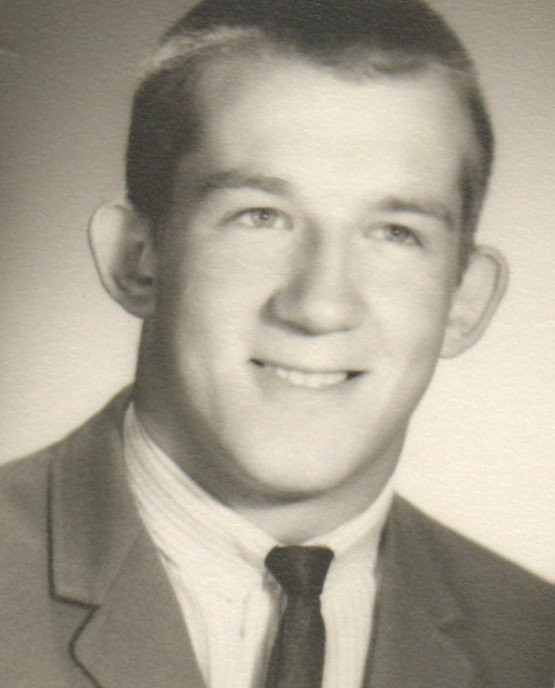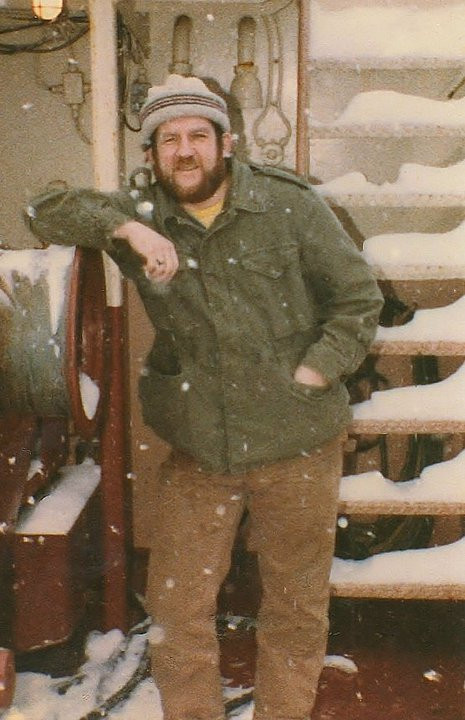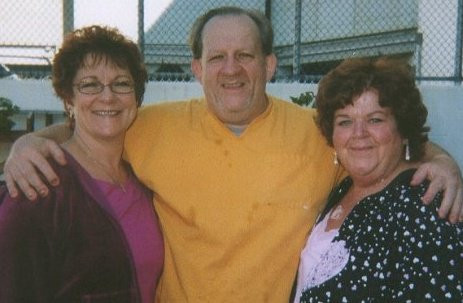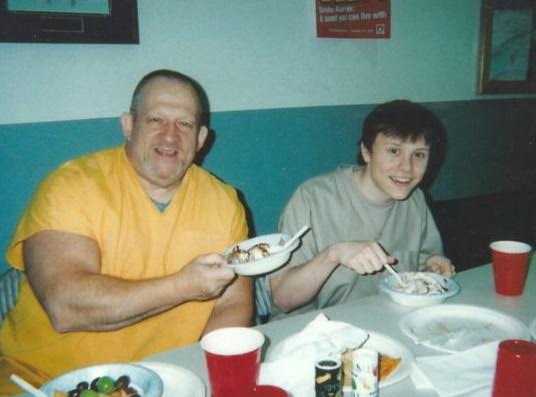~ The Person Mac Is ~
Mac’s Personal History
Donald Charles McDonald was born on October 22, 1949. The youngest of Bill and Marion McDonald’s three children, his childhood nickname of “Mac” has stuck with him for life. Born and raised in Seattle, Washington, Mac attended Our Lady of the Lake grade school for eight years. By the time Mac graduated from Bishop Blanchet High School in 1967, his ability as a running back and hardcore defensive hitter earned him a number of full scholarships from colleges throughout the State.
Deciding to attend school alongside his best friend, Mac enrolled in Spokane Community College, where he helped build the Spartan’s first football team. Early on, his teammates awarded him the nickname “Mac Truck.” Along with the nickname, came the saying, “Don’t f*** with the Truck if you can’t shift the gears!” During his sophomore year, Mac’s team went undefeated and at one time ranked third in the Nation in its class.
After the first quarter of classes during his second year of College, Mac returned to Seattle for Christmas. While in Seattle, he learned he had a low number in the Military Draft Lottery System.

Instead of returning to college to await a notice from the draft board calling him to Vietnam, McDonald decided to enlist. This option gave him more control over his term of service. He signed up with the Marine Corps Air Wing at Sand Point Naval Air Station, less than a mile from his childhood home.
Within a few days of signing his enlistment papers, he arrived at boot camp in San Diego, California. Training for Air Wing was an intensive program that included airplanes, jets, and helicopters. After leaving San Diego, McDonald attended Marine Air Training and Radio Operations School in Naval Air Stations in Jacksonville, Florida and Nashville, Tennessee.
After a year of active service, Mac returned to Seattle to complete his six-year contract as a reservist in December 1969. With the Air Wing program at Sand Point no longer operational, McDonald transferred to the Air Wing unit at the Whidbey Island Naval Air Station. During this time, he accepted an offer to return to college on a second football scholarship.
Just shy of obtaining two college degrees and recently married, Mac left the University of Puget Sound and found employment as a study hall proctor and coach for the football and wrestling teams at Kennedy High School. After his marriage to his high school sweetheart ended in 1975, he worked as a manager for two South End restaurants.
However, Mac found it hard to put down roots. He traveled the country for a year, before returning to the Seattle area to open an auto body repair shop with his father. While there he helped rebuild a tug boat and when it took on a contract in San Diego, CA, Mac signed on as Chief Engineer. After his father’s death, Mac returned to Seattle and opened an auto repair shop in Wedgwood.
Wedgwood Auto Rebuild and Paint was completed and operational in 1983, equipped with everything needed to paint and repair cars. Soon after, one of the men Mac had worked for on the tugboat asked him to find a van they could rebuild. In addition to the 1966 Dodge van purchased for the rebuild, Mac found a second van the two men used for parts. When completed a few weeks later, Jay Buckalew drove the van home to Kodiak, Alaska, taking the spare parts with him.

It was football season and Jay brought Mac along when attending local game night parties. The first Saturday he was in Kodiak, Mac accompanied Jay and his wife Lorna to the home of Mike Losser. Being new in town, Jay made sure to introduce Mac to everyone present, including Mike’s daughter Debbie, and her friend Laura Ibach.
Over the next year and a half, Mac worked a variety of jobs from auto repair to bartending. Always finding it easy to make friends, Mac’s circle of friends continually grew. Traveling in the same small-town social circles, Mac and Laura saw each other often at various social events, which eventually included an occasional after-hours casual date.
Although most of his friends considered him a “happy drunk,” Mac determined that his drinking had been the predominant factor in the loss of numerous jobs and relationships. Wanting to make a change in his life, he checked himself into the Hope House, a 30-day treatment program. At some point during his stay and the required AA meetings, he met and became close friends with a somewhat older James Kerwin.
Not long after graduating from the Hope House Program, Mac received a message to call his sister Katha in Seattle. When he returned the call, he was devastated to learn that their Mom had passed away in her sleep.
Feeling overwhelming guilt over not being there, Mac soon returned to his old habits and began drowning his pain in alcohol. After a very long night in which James did not leave his side, Mac checked into the Hope House treatment program for a second time. Upon his second graduation, he moved into the ReEntry Dorm Apartments. The Dorm Apartments was actually a program-affiliated group home managed by Gladys Baldwin, who also happened to be James Kerwin’s ex-wife.
Life fell into a consistent routine for Mac. Although not officially employed, he was consistently paid for auto repair or body jobs through friends. Living at the apartments enabled him to save most of his earnings for his return home to Seattle. As a graduate of the Hope House, he was on the planning committee for an all-city dance being held on Saturday, March 29, 1986. The same day he was questioned and arrested for the kidnapping of Ms Laura Henderson.
Mac did not have a police record prior to his arrest on March 29, 1986. He was 36 years old. The prosecution’s theory was predicated on the idea that McDonald suddenly turned into the calculating hired killer of a woman he socialized with on a number of occasions at Kodiak bars. Yet the prosecution presented no evidence that either McDonald or Jim Kerwin received any payment of any kind from Jack Ibach, or that McDonald knew Ibach prior to his arrest.
In addition, McDonald’s conduct since being imprisoned is consistent with his law-abiding life prior to being arrested. McDonald worked for the Alaska Correctional Industries at the Spring Creek Correctional Center in Seward, Alaska, from 1994 to 2004. The factory made wood furniture and McDonald did all the Auto-Cad drafting and price quotations for the factory.

McDonald taught himself to use a computer and the Auto-Cad software program while in prison. At that time, he was also voted President of a prison club organization that runs the prison commissary store.
After Alaska eliminated the Correctional Industries Program, McDonald took a job in the prison Computer Lab as teacher and lab attendant. He worked there for two years when he was offered the job working in the prison Kitchen Food Department, in charge of payroll, inventory and invoicing, Menus, and recipes.
In addition to his strong work ethic, Mac began lifting weights to stay healthy. At 50 years old Mac routinely bench pressed 505 lbs and has always been considered one of the strongest men on the yard.
Mac’s attitude and personality are proven by the fact that he has never once been found guilty of any disciplinary write-up, which is in itself almost an impossibility at SCCC. In addition to his daily job responsibilities, the Spring Creek Administration asked McDonald to live in the Youth Mod, where younger inmates attend High School within the prison walls. McDonald immediately accepted and stepped into the role of Mentor, a teacher of sorts, and when necessary, a protector.
In 2012, a then-16 year old James Trueblood, picked up a gun while watching television with a friend in his Dads home. The gun discharged accidentally, killing his best friend. Unfamiliar with the legal system, this boy and his family accepted the plea deal as agreed to by the prosecution and the boy’s court appointed defense attorney. The plea deal offered: Manslaughter, which carries a mandatory 10-year sentence, of which he was sentenced to three and a half years.

This young man and his parents had to sign special papers so he could be placed in Spring Creek, a Maximum Security Prison, where he could attend High School. This was done before James was even sentenced, an unheard of decision. Out of all the inmates he could have been placed with, the prison recommended that this boy be placed with McDonald. Living with McDonald offered this young man safety, as McDonald was well known and respected on the compound. Upon his arrival, this young man was 17, but did not even look 15, and would have been a walking victim in such a prison without protection. It seems that even the Administration of Spring Creek Prison know they can count on McDonald.
Note: We are pleased to report that James Trueblood served his sentence without incident and is now safely home with his family and working at a good job.
McDonald continued to work in the Spring Creek Kitchen until his transfer to the Wildwood Correctional Center in Kenai, Alaska. In fact, he has never gone any length of time not working or holding a job. McDonald is not an inmate just “doing his time.” He says, “I’m here and I have to survive… but this is not going to change who I am. Simple as that!”